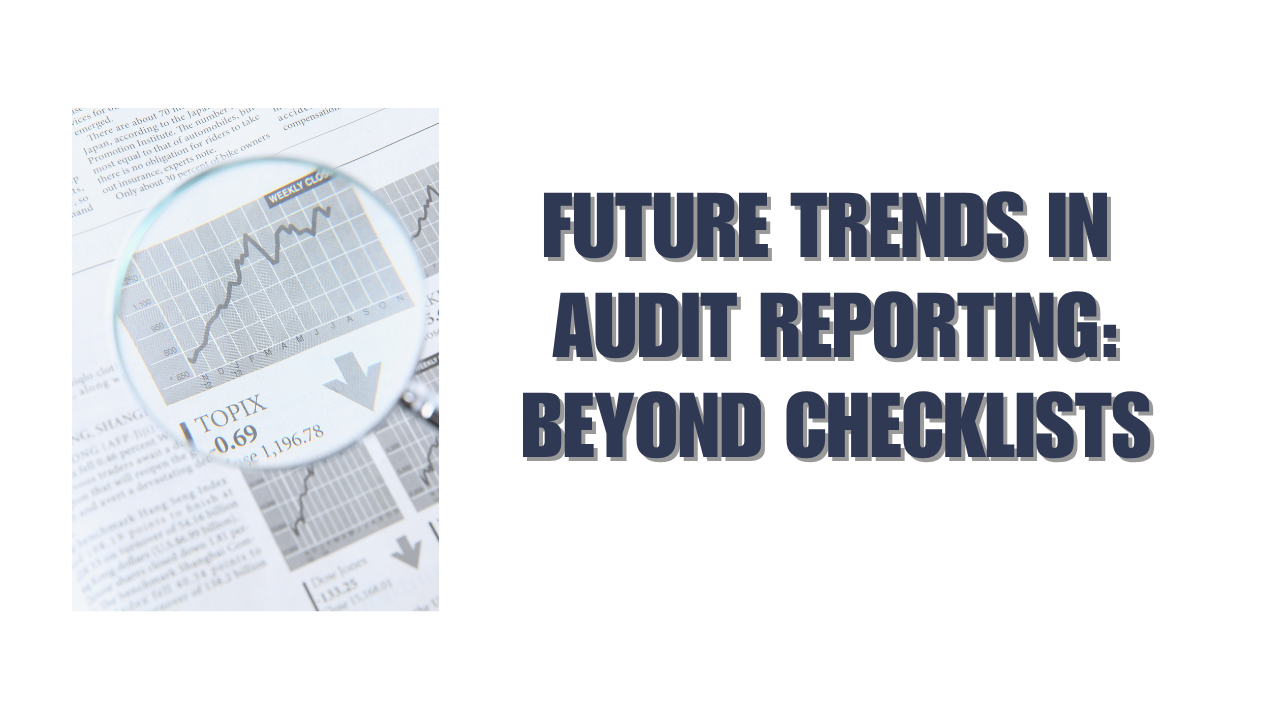Data analytics tools have changed how auditors work. These tools turn the once-tedious sampling process into a valuable source of insights. Good data auditing practices can help alleviate this problem.
Auditors now focus more on analytical work instead of traditional “ticking and bashing” tasks. Modern audit data analytics tools allow teams to analyze complete data sets rather than limited samples. This helps them spot anomalies and potential risks quickly. A recent study found that 45% of organizations struggle with data quality and accuracy as their main data processing challenge. This shows why companies need advanced analytics tools and techniques.
Analytics tools help auditors find trends and patterns that traditional methods might miss. Auditors can now do more than just check compliance boxes. They can turn audits into valuable opportunities that drive business improvements. This piece will show how data analytics software helps auditors spot unusual patterns, evaluate risks, and provide valuable business insights in today’s digital world.
From Traditional Audits to Data-Driven Insights
Traditional auditing has used sampling methods for decades. Auditors would pick a subset of transactions to check and apply their findings to all transactions. This approach worked well with paper records, but the digital age has shown major flaws in these old methods.
Limitations of Sample-Based Auditing
Sample-based auditing faces a basic challenge due to statistical uncertainty. Auditors who look at only some transactions deal with two key risks:
- Sampling risk: The chance that sample results differ from what a full review would show. This risk goes down as sample size gets bigger.
- Non-sampling risk: Mistakes that happen outside sampling, like picking the wrong audit steps or reading evidence incorrectly.
Studies show that sampling methods often miss odd patterns and outliers that could affect financial statements. Even the best sampling methods leave room for error when using partial data. The biggest issue is simple – problems in unreviewed transactions stay hidden.
Change Toward Full-Population Testing
Data analytics tools have revolutionized auditing by enabling full-population testing. Auditors can now analyze every piece of data from their clients’ systems. This detailed approach offers clear benefits:
Full-population testing removes statistical risk by checking every transaction. It gives a true picture of an organization’s finances. It also helps find unusual patterns, strange transactions, and mistakes that might point to errors or fraud.
But this method has its problems. Auditors who use full-population testing are not as likely to be skeptical when they see fraud warnings in external data, compared to those who use sampling. They also put too much trust in evidence from clients.
Role of Automation in Modern Audit Workflows
Automation stands at the heart of modern auditing. Financial data has become too complex and vast for manual processing. Modern audits use several state-of-the-art tools:
Workflow automation cuts down process differences and removes the need for status meetings. Automation lets auditors check full data sets faster and spot issues that manual reviews might miss.
Evidence-based auditing boosts connectivity and understanding. Auditors can focus on areas that need expert judgment. Teams can verify financial statements faster and with better detail.
Technology makes audits quicker and more accurate, but human judgment remains crucial. The best results come from mixing tech efficiency with human expertise. Data analytics handles routine work while auditors tackle complex problems.
Business digitalization has turned the audit landscape into connected ecosystems. Evidence-based processes build trust in audits and give stakeholders a clearer view of how teams reach conclusions.
Key Types of Data Analytics Tools Used in Auditing
Data analytics tools in modern auditing fall into four distinct types. Each type plays a unique role throughout the audit lifecycle. These tools are the foundations of modern audit methods and help auditors pull valuable insights from complex data sets.
Descriptive Analytics for Historical Pattern Recognition
Descriptive analytics looks at past and present data to sum up historical information and explain what happened within an organization. This simple analytics type lets auditors spot trends, patterns, and anomalies in financial and operational data. These tools transform large amounts of client data into structured presentations that both auditors and clients can easily grasp.
A trial balance serves as a good example. Audit teams can spot patterns that might not jump out through regular financial statement analysis. Teams can track trends and ratios over time easily, which makes finding anomalies or outliers much simpler.
Descriptive analytics proves most valuable in compliance reporting. Auditors create summaries of financial transactions and operational performance that give stakeholders clear snapshots of organizational activities.
Diagnostic Analytics to Trace Anomalies
Diagnostic analytics breaks down why something happened while descriptive analytics shows what happened. This method digs deeper through drill-down analysis, data mining, and correlation techniques to learn about the reasons behind trends and anomalies.
Let’s say descriptive analytics shows a big drop in gross profit during one month. Diagnostic analytics helps auditors find possible causes by looking at customer feedback, market conditions, and internal processes. Auditors can then flag these issues to clients and suggest a closer look at what drives gross profit performance.
Diagnostic analytics helps audit teams understand complex compliance issues and operational problems. This leads to useful insights for fixing issues.
Predictive Analytics for Risk Forecasting
Predictive analytics uses historical data and statistical models to see what might happen next. These tools study past trends to spot potential risks and opportunities, which leads to better decision-making. Auditors use predictive analytics to find high-risk areas based on past transaction patterns.
These models can predict fraud likelihood by analyzing past transactions and unusual patterns. Organizations can take preventive steps before problems occur. Predictive analytics also helps the audit function support strategic planning and risk management by forecasting financial trends and possible shortfalls.
Prescriptive Analytics for Audit Recommendations
Prescriptive analytics stands as the most advanced type and moves beyond predictions to suggest specific actions. These tools blend data, algorithms, and machine learning to give practical advice for getting desired results. Audit teams find them valuable for choosing the best course of action.
In real-world scenarios, prescriptive analytics optimizes resource allocation across departments. When predictive analytics spots a possible budget deficit, prescriptive analytics suggests ways to cut costs or find new revenue. Manufacturing companies use these tools to find economical solutions for maintenance that lower equipment failure risks.
Prescriptive analytics offers targeted advice to boost internal controls, reduce risks, and improve financial management. Combined with other analytics types, these tools create a complete framework that turns traditional audit processes into analytical, insight-driven activities.
How Audit Data Analytics Tools Uncover Hidden Patterns
Audit data analytics tools work as sophisticated pattern-recognition engines that turn raw financial data into useful insights. These tools get into complete datasets to find relationships and irregularities that traditional audit methods might miss.
Anomaly Detection in Journal Entries
The process of anomaly detection helps identify journal entries that don’t follow normal patterns. The IAASB describes this as “the science and art of discovering and analyzing patterns, deviations and inconsistencies… through analysis, modeling and visualization”. Modern audit software now includes anomaly detection features that give auditors alerts about unusual transactions as they happen.
EY’s Helix GL Anomaly Detector uses machine learning to spot suspicious journal entries in massive databases. The tool can spot potentially fraudulent entries among millions of legitimate ones. MindBridge takes this further by using a suite of 32 tests simultaneously on up to 500 million records and analyzes 16 billion general ledger data points.
Outlier Identification in Transaction Flows
The process of outlier identification looks at transaction flows to highlight irregular financial movements. This method spots entries created by processes that differ from those behind most data. These outliers come in three main categories:
- Point outliers – single transactions that substantially deviate from normal patterns
- Contextual outliers – transactions that seem unusual only in specific contexts (time periods, departments)
- Collective outliers – groups of transactions that together show abnormal behavior
Research using PaySim (a financial transaction simulator) showed that anomaly detection models scored an impressive 0.875 area under the ROC curve when identifying fraudulent transactions without prior training.
Trend Analysis Across Time Periods
Trend analysis looks at data from different time frames to spot patterns that might signal problems. Auditors can now track detailed trends over time with visualization software, such as month-by-month gross profit performance. This timeline view helps reveal unexpected performance drivers that need investigation.
Basic variance analysis might show a decrease in gross profit between start and end of year. However, data analytics tools break this down into monthly patterns to show exactly when changes happened. This detailed approach helps pinpoint specific time periods where unusual transactions might have occurred.
Correlation Mapping Between Financial Metrics
Correlation mapping shows how different financial variables relate to each other. These relationships demonstrate how changes in one metric affect others, offering a fuller picture of financial health. Financial correlations are crucial in modern finance, particularly in the capital asset pricing model that earned a Nobel prize.
Visualization dashboards show auditors direct correlations between KPIs and risk, which makes finding anomalies easier. The analysis at different resolution scales reveals varied insights – high-resolution analysis catches market state changes, while middle-resolution analysis spots features of financial crises.
These techniques help audit data analytics tools convert raw financial information into meaningful patterns. This guides auditors toward areas that need deeper investigation and ended up improving audit quality while reducing time spent on routine tasks.
Tool Spotlight: TeamMate, Strongbox, and DataSnipper
Modern audit environments have given rise to specialized audit software packages that meet specific needs. These tools show how data analytics theory turns into practical solutions. Auditors can now work more efficiently and gain deeper insights.
TeamMate Analytics for Excel-Based Testing
TeamMate Analytics works right inside Excel, giving auditors a familiar platform without extensive training needs. The software has over 150 tools and features built specifically for auditors. Its test library contains 200 audit tests for expenses, HR, and journals of all types. Auditors can convert print reports, PDFs, and text files into Excel format ready for analysis. The software even pulls information from headers, footers, and subtotals. Data cleansing and organization happen automatically, which cuts down manual work and ensures accurate analysis.
Strongbox for Smooth Data Extraction
Strongbox creates an automated path from accounting systems to standardized Excel workbooks that delivers instant, secure data extraction. The tool blends naturally with QuickBooks, NetSuite, and Xero, letting auditors pull financial data without effort. TeamMate Analytics and Strongbox work together perfectly to give external auditors powerful data extraction and analytics capabilities. Client experience improves as auditors spend less time on data manipulation and report generation. They can focus on critical audit tasks instead.
Visualization Capabilities for Client Reporting
These three tools have powerful visualization features that turn complex data into clear visuals. TeamMate Analytics has Advanced Visualizer with many options to explore data graphically and create custom charts for findings. Dashboards show direct links between KPIs and risk, which helps identify unusual transactions quickly. Auditors can create visual stories throughout the audit lifecycle with these capabilities. The visuals work well for planning, risk assessments, and presenting findings to management.
Implementing a Data Analytics Framework in Audit Firms
Audit firms need a well-laid-out framework to make data analytics tools work. The American Institute of CPAs (AICPA) offers a complete approach that guides auditors to add these powerful technologies to their practice.
5-Step ADA Process by AICPA
AICPA suggests five steps to add audit data analytics (ADA): The first step is to plan analytics by figuring out where and when ADA fits in the audit engagement. The second step gets data ready through cleansing and normalization. The third step checks the data’s quality and source to verify its reliability. The fourth step runs analytics procedures and looks at results, then tweaks them based on original findings. The last step assesses outcomes to see what works and spots areas that need more audit procedures.
Data Preparation and Cleansing Techniques
Data preparation takes up 80% of analytics work, while actual analysis makes up just 20%. The process starts with accessing data, then normalizes and cleans it before analysis begins. Data transformation fixes issues like different date formats (“yyyy-mm-dd” versus “dd-mm-yyyy”) and removes leading zeros from inventory codes for proper comparison. TeamMate Analytics handles data cleansing on its own, which cuts down manual work and gets data ready.
Evaluating Data Relevance and Reliability
Data relevance shows whether information addresses identified material misstatement risks. Reliability checks look at external sources’ expertise, regulatory oversight, and the company’s relationship. Audit standards ask for proof about accuracy and completeness when using company-produced information. Teams can do this through direct testing or by checking controls over information accuracy.
Integrating Tools into Existing Audit Workflows
Analytics should be part of every audit step as an “opt-out” rather than “opt-in” approach. Auditors, data scientists, and IT specialists now work together as standard practice. Teams also grow through training programs that build technical skills and help them interpret data. Audit firms must set up resilient data governance with strict access controls and encryption to keep data secure and private.
Conclusion
Data analytics tools have reshaped the auditing profession completely. These powerful tools help auditors go beyond traditional sampling methods to test entire populations. This represents more than just a technical upgrade – it’s a complete reimagining of how audits work.
Different types of analytics tools work together to make the audit process stronger. Descriptive analytics shows historical patterns, while diagnostic analytics explains why anomalies occur. Predictive analytics builds on this foundation to forecast risk areas and helps audit teams use their resources better. Prescriptive analytics rounds out the process by suggesting specific actions to fix identified problems.
These analytics approaches excel at finding hidden patterns that old methods often miss. They can spot suspicious entries in millions of transactions and highlight unusual financial movements quickly. Time-based trend analysis shows subtle changes that might signal problems. The correlation mapping between financial metrics gives deeper insights into how organizations perform.
Tools like TeamMate Analytics, Strongbox, and DataSnipper show how theoretical concepts become real solutions. They make data extraction easier, link documents automatically, and turn complex findings into clear insights that clients understand easily.
Analytics tools work best with the right approach. The AICPA’s five-step framework gives audit firms a clear path forward. It focuses on planning, preparing data, checking quality, executing well, and evaluating results. Firms need to invest in both technology and training programs to build technical skills and data interpretation abilities.
The future looks promising. Data analytics will improve audit quality and reduce time spent on routine work. This approach helps provide better insights to clients and turns audits from compliance tasks into valuable strategic tools. Modern auditing doesn’t replace human judgment – it uses powerful analytics to reveal what was previously hidden.
FAQs
Q1. How do data analytics tools improve the auditing process?
Data analytics tools enable auditors to analyze entire datasets instead of relying on sampling methods. This allows for full-population testing, which eliminates statistical risk and helps detect unusual patterns, irregular transactions, and inconsistencies that might indicate errors or fraud.
Q2. What are the key types of data analytics used in modern auditing?
Modern auditing uses four main types of data analytics: descriptive analytics for historical pattern recognition, diagnostic analytics to trace anomalies, predictive analytics for risk forecasting, and prescriptive analytics for audit recommendations.
Q3. How do audit data analytics tools uncover hidden patterns?
These tools use techniques like anomaly detection in journal entries, outlier identification in transaction flows, trend analysis across time periods, and correlation mapping between financial metrics to reveal patterns that might be missed by traditional methods.
Q4. What are some popular data analytics tools used in auditing?
Some popular tools include TeamMate Analytics for Excel-based testing, Strongbox for seamless data extraction, and DataSnipper for automated document linking. These tools offer various features to streamline the audit process and provide deeper insights.






